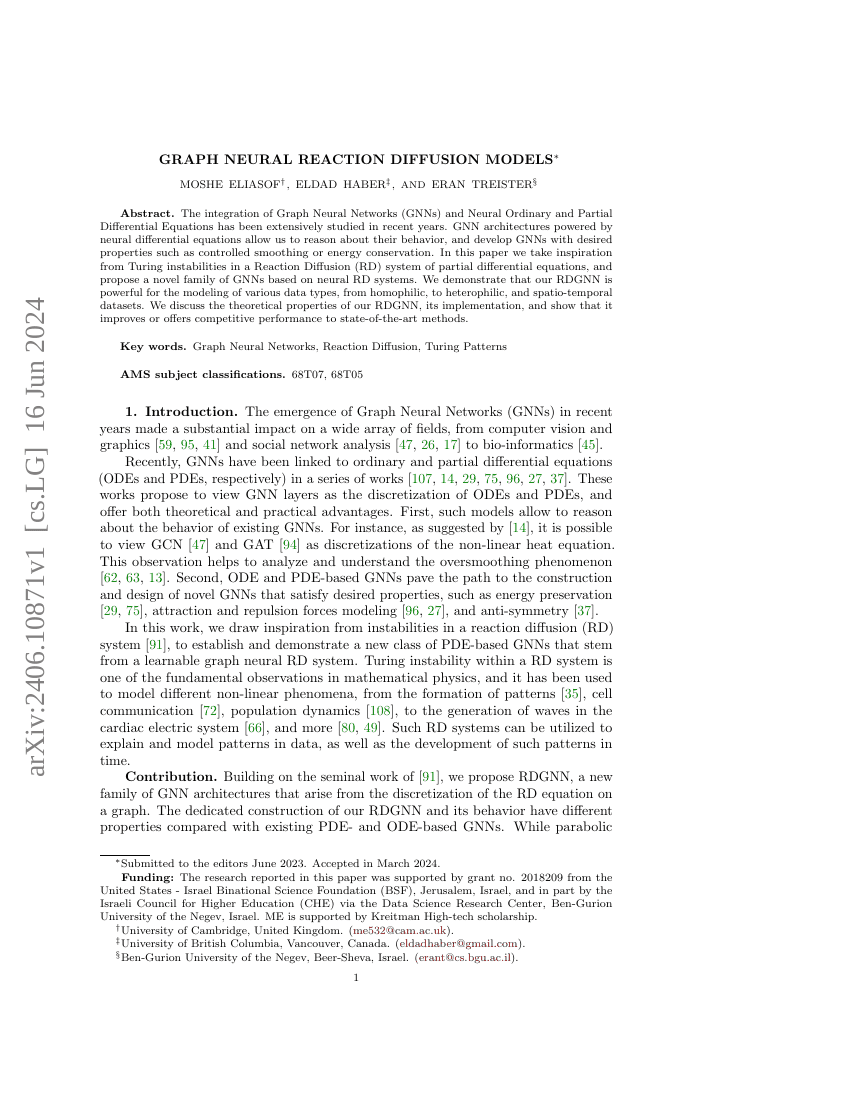Command Palette
Search for a command to run...
Moshe Eliasof Eldad Haber Eran Treister

Abstract
The integration of Graph Neural Networks (GNNs) and Neural Ordinary and Partial Differential Equations has been extensively studied in recent years. GNN architectures powered by neural differential equations allow us to reason about their behavior, and develop GNNs with desired properties such as controlled smoothing or energy conservation. In this paper we take inspiration from Turing instabilities in a Reaction Diffusion (RD) system of partial differential equations, and propose a novel family of GNNs based on neural RD systems. We \textcolor{black}{demonstrate} that our RDGNN is powerful for the modeling of various data types, from homophilic, to heterophilic, and spatio-temporal datasets. We discuss the theoretical properties of our RDGNN, its implementation, and show that it improves or offers competitive performance to state-of-the-art methods.
Benchmarks
| Benchmark | Methodology | Metrics |
|---|---|---|
| node-classification-on-actor | RDGNN-I | Accuracy: 38.69 ± 1.41 |
| node-classification-on-chameleon | RDGNN-I | Accuracy: 74.79 ± 2.14 |
| node-classification-on-cornell | RDGNN-I | Accuracy: 92.72 ± 5.88 |
| node-classification-on-squirrel | RDGNN-I | Accuracy: 65.62 ± 2.33 |
| node-classification-on-texas | RDGNN-S | Accuracy: 94.59 ± 5.97 |
| node-classification-on-texas | RDGNN-I | Accuracy: 93.51 ± 5.93 |
| node-classification-on-wisconsin | RDGNN-I | Accuracy: 93.72 ± 4.59 |
Build AI with AI
From idea to launch — accelerate your AI development with free AI co-coding, out-of-the-box environment and best price of GPUs.